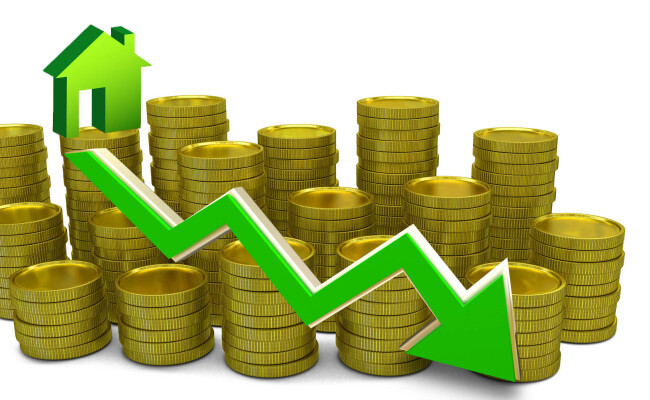hankyoreh
Links to other country sites 다른 나라 사이트 링크
In South Korea, more and more debt-ridden “marginal households”

In a report titled “Characteristics and Implications of Marginal Households with Household Debt” the Hyundai Research Institute reported that there are 1.58 million “marginal households” in South Korea that are having trouble paying off their debts.
“Marginal households” refer to those with a debt service ratio (DSR) above 40%. Debt service ratio is the ratio of debt to disposable income.
The report analyzed data from Statistics Korea’s survey of household finance and welfare to conclude that the number of marginal households had increased from 1.32 million in 2012 to 1.58 million in 2015, or by 258,000 (19.5%) in three years.
The percentage of households with financial debt that are marginal households also increased over the same period from 12.3% to 14.8%. The total amount of household debt during this period ballooned from 964 trillion won (US$82.69 billion) to 1.21 quadrillion won.
Marginal households are a frequent phenomenon among the elderly, low-income earners and the self-employed. They account for 17.5% of households in which the householder is 60 years old or above, 18.7% in which the householder does not have a job, 22.9% in which the householder is in the lowest income quintile (bottom 20%) and 20.4% in which the householder is self-employed with employees under him or her.
The average debt service ratio of marginal households is 104.7% - calculated by dividing the interest on the principle (41.60 million won) by disposable income (39.73 million won) - which means that these households’ income is not sufficient to pay back the principle.
With an average financial debt of 150.43 million won, it is estimated that it would take these families 3.8 years to pay back their debt even if they devoted all their disposable income to that purpose.
For the average non-marginal family (with financial debt of 63.01 million won and disposable income of 48.44 million won), this is estimated to take 1.3 years.
Another reason for the deteriorating quality of household debt is that, while household loans from banks increased by an average of 6.5% per year over the past three years (from 467 trillion won to 564 trillion won), loans at non-banking financial institutions jumped by 9.6% (from 439 trillion won to 578 trillion won).
Considering the sharp increase in debt, the authors of the report think it is very likely that large numbers of households will become marginal when the time comes for them to start paying back the principal on their loans.
“Marginal households need to be monitored, and measures should be taken to improve their ability to pay back their loans,” the report said.
By Lee Bon-young, staff reporter
Please direct questions or comments to [english@hani.co.kr]

Editorial・opinion
![[Column] Park Geun-hye déjà vu in Yoon Suk-yeol [Column] Park Geun-hye déjà vu in Yoon Suk-yeol](https://flexible.img.hani.co.kr/flexible/normal/500/300/imgdb/original/2024/0424/651713945113788.jpg) [Column] Park Geun-hye déjà vu in Yoon Suk-yeol
[Column] Park Geun-hye déjà vu in Yoon Suk-yeol![[Editorial] New weight of N. Korea’s nuclear threats makes dialogue all the more urgent [Editorial] New weight of N. Korea’s nuclear threats makes dialogue all the more urgent](https://flexible.img.hani.co.kr/flexible/normal/500/300/imgdb/original/2024/0424/7317139454662664.jpg) [Editorial] New weight of N. Korea’s nuclear threats makes dialogue all the more urgent
[Editorial] New weight of N. Korea’s nuclear threats makes dialogue all the more urgent- [Guest essay] The real reason Korea’s new right wants to dub Rhee a founding father
- [Column] ‘Choson’: Is it time we start referring to N. Korea in its own terms?
- [Editorial] Japan’s rewriting of history with Korea has gone too far
- [Column] The president’s questionable capacity for dialogue
- [Column] Are chaebol firms just pizza pies for families to divvy up as they please?
- [Column] Has Korea, too, crossed the Rubicon on China?
- [Correspondent’s column] In Japan’s alliance with US, echoes of its past alliances with UK
- [Editorial] Does Yoon think the Korean public is wrong?
Most viewed articles
- 1[Column] Park Geun-hye déjà vu in Yoon Suk-yeol
- 2Will NewJeans end up collateral damage in internal feud at K-pop juggernaut Hybe?
- 3Thursday to mark start of resignations by senior doctors amid standoff with government
- 4Why Korea shouldn’t welcome Japan’s newly beefed up defense cooperation with US
- 5‘We must say no’: Seoul defense chief on Korean, USFK involvement in hypothetical Taiwan crisis
- 6[Guest essay] The real reason Korea’s new right wants to dub Rhee a founding father
- 7N. Korean hackers breached 10 defense contractors in South for months, police say
- 8[Column] ‘Choson’: Is it time we start referring to N. Korea in its own terms?
- 9[Editorial] New weight of N. Korea’s nuclear threats makes dialogue all the more urgent
- 10Kim Jong-un expressed ‘satisfaction’ with nuclear counterstrike drill directed at South